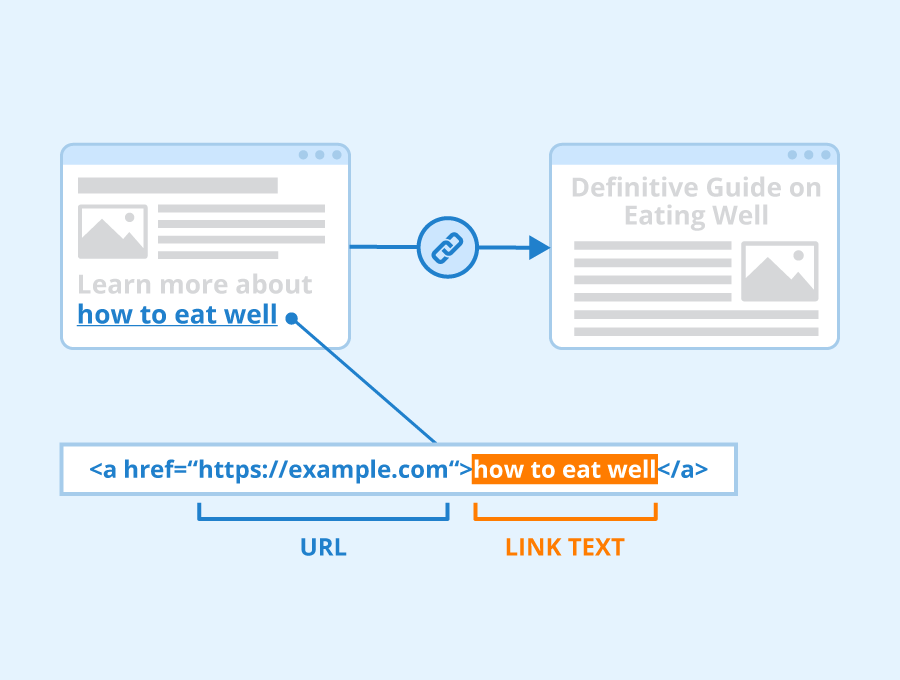What is Anchor text in seo? how to create Anchor text?

Anchor text is the clickable text within a hyperlink that users can click to navigate to another webpage or resource. It plays a significant role in SEO (Search Engine Optimization) because search engines use anchor text to understand the context and relevance of the linked page. Here’s a more detailed explanation of anchor text:
Types of Anchor Text:
Anchor text can be categorized into several types, each serving a different purpose in SEO:
Exact Match Anchor Text:
This type of anchor text uses the exact target keyword or key phrase as the clickable text. For example, if you’re linking to a page about “digital cameras,” the anchor text might be “digital cameras.”
Partial Match Anchor Text:
Partial match anchor text contains a variation or partial match of the target keyword. For instance, instead of using “digital cameras,” you might use “best digital cameras.”
Branded Anchor Text:
Branded anchor text includes the brand name of the website or company. For example, if you’re linking to Apple’s website, the anchor text might be “Apple.”
Naked URLs:
Naked URLs are anchor text that uses the full URL of the linked page. For example, “https://www.example.com” is a naked URL anchor text.
Generic Anchor Text:
Generic anchor text uses non-descriptive phrases like “click here,” “learn more,” or “read this article.” While these are less informative, they can still be useful for usability.
Image Alt Text:
In cases where the anchor is an image, the alt text of the image serves as the anchor text when the image is linked.
Importance in SEO:
Anchor text is essential in SEO for the following reasons:
Relevance:
Search engines use anchor text to understand the context of the linked page. Relevant anchor text helps search engines better comprehend what the linked page is about.
Ranking Signals:
Anchor text provides signals to search engines about the topic and quality of the linked page. It influences how search engines rank pages for specific keywords.
User Experience:
Descriptive and relevant anchor text improves the user experience by giving visitors a clear idea of what to expect when they click the link.
Best Practices for Anchor Text:
To use anchor text effectively in your SEO strategy, consider the following best practices:
Natural and Relevant:
Make sure your anchor text is natural and contextually relevant to the content it links to. Avoid over-optimization with too many exact match keywords.
Variety:
Use a variety of anchor text types to create a diverse backlink profile. Overusing one type of anchor text can raise red flags with search engines.
Long-Tail Keywords:
Incorporate long-tail keywords when appropriate, as they can be less competitive and highly relevant to specific content.
Branding:
When linking to your own website, use branded anchor text to promote your brand name.
Avoid Overuse:
Avoid excessive internal linking with keyword-rich anchor text within your own website. This can appear spammy.
Accessibility:
Ensure that your anchor text is descriptive enough for visually impaired users who rely on screen readers. Screen readers will read the anchor text aloud.
Test and Monitor:
Continuously test and monitor the performance of different anchor text strategies to see what works best for your website and audience.
In summary, anchor text is a crucial element of SEO that provides context, relevance, and ranking signals to search engines. By using anchor text strategically and following best practices, you can improve the visibility and ranking of your webpages in search engine results. Hire Processional Marketing’s Agency for effective Marketing.
